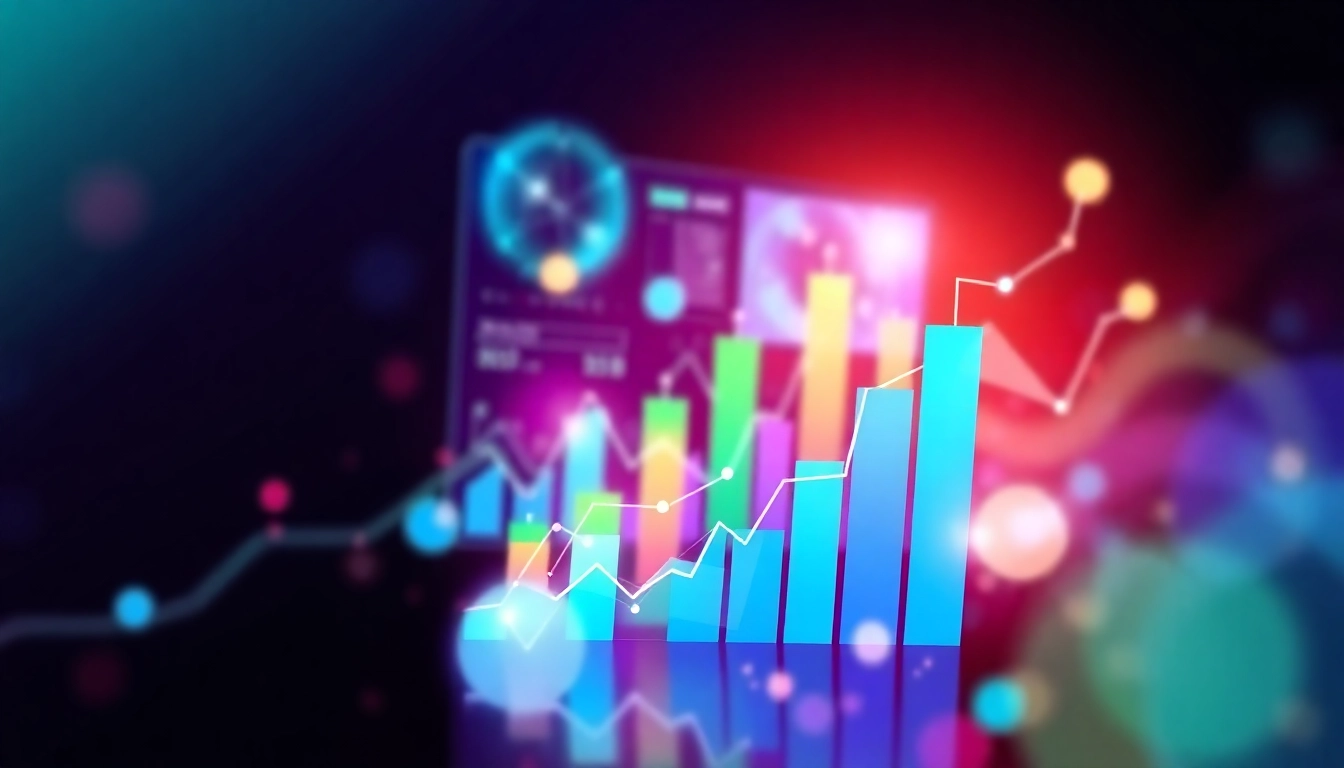
Understanding Data Science Fundamentals
Key Concepts in Data Analysis
Data science is an interdisciplinary field that combines statistics, computer science, and domain expertise to extract insights from structured and unstructured data. At its core, data analysis involves multiple key concepts that serve as tools for understanding patterns, trends, and relationships within datasets. These concepts include:
- Descriptive Statistics: Refers to the methods of summarizing and visually presenting data, providing a clear understanding of its distribution, central tendencies, and variability.
- Inferential Statistics: Involves drawing conclusions from a sample to make inferences about a population, using techniques such as hypothesis testing and confidence intervals.
- Data Cleaning: The process of identifying and correcting errors in the data, ensuring accuracy and consistency which is crucial for reliable analysis.
- Exploratory Data Analysis (EDA): A critical step in the analysis that utilizes visual methods to understand the data better before applying formal modeling techniques.
Understanding these concepts lays a strong foundation for anyone looking to delve into the world of data science. The importance of analytics cannot be understated, as it plays a vital role in decision-making processes across various sectors. As organizations increasingly rely on data to inform their strategies, the role of data scientists becomes more pronounced, underscoring the need for a solid grasp of analytical techniques. For more insights, you can visit https://www.informaticsview.com.
Tools & Technologies for Data Science
In today’s data-driven landscape, the success of data science initiatives often hinges on the right tools and technologies. Here’s a closer look at some foundational technologies that every data scientist should be familiar with:
- Programming Languages: Python and R are the most popular programming languages in data science due to their extensive libraries and frameworks that facilitate data analysis. Python’s libraries like Pandas, NumPy, and Matplotlib are invaluable for data manipulation and visualization.
- Data Visualization Tools: Tools such as Tableau, Power BI, and D3.js allow data scientists to create compelling, visual representations of data, making it easier to communicate insights to stakeholders.
- Database Management Systems: SQL remains a foundational skill for data scientists due to its role in querying databases. Understanding both relational and non-relational databases, like MySQL and MongoDB, is critical.
- Machine Learning Frameworks: Frameworks such as TensorFlow and Scikit-learn enable data scientists to develop predictive models, facilitating advanced analytics applications.
Importance of Data Quality in Insights
The quality of data is paramount in ensuring that the insights drawn from analysis are both accurate and reliable. Poor quality data can lead to misleading conclusions, adversely affecting decision-making and strategy formulation. Here are a few aspects to consider:
- Accuracy: Data must be correct and free from errors to avoid invalid conclusions.
- Completeness: Missing data can skew analyses, making it vital to use comprehensive datasets for more robust insights.
- Consistency: Data collected from various sources must be consistent in format and labeling to ensure that analyses are coherent and comparable.
- Timeliness: Data needs to be current and relevant to provide real-time insights, particularly in fast-paced industries.
Advanced Techniques in Data Analytics
Machine Learning and Predictive Analytics
Machine learning is a powerful subset of artificial intelligence that enables systems to learn from data and improve their performance over time without being explicitly programmed. In data analytics, machine learning can be used for predictive modeling, where historical data predicts future outcomes. Key concepts include:
- Supervised Learning: This involves training models on labeled data, which means that the output of the prediction is known during training. Examples include regression and classification tasks.
- Unsupervised Learning: Here, models are trained using data that does not have labeled responses. Clustering and association algorithms are common methods used to discover patterns and relationships within data.
- Reinforcement Learning: This technique involves training algorithms to make a sequence of decisions through trial and error interactions with an environment, learning to achieve maximum rewards.
Big Data Frameworks Overview
With the exponential growth of data, big data frameworks facilitate the processing and analysis of vast, complex datasets that traditional data processing applications cannot handle. Notable frameworks include:
- Apache Hadoop: An open-source framework that allows for distributed storage and processing of large datasets using a cluster of computers.
- Apache Spark: Designed for rapid processing, Spark can work in-memory and provides APIs for streaming, SQL, and machine learning, making it a versatile choice for data-intensive applications.
- NoSQL Databases: Unlike traditional SQL databases, NoSQL databases like Cassandra and MongoDB provide flexible schemas and are designed to easily scale horizontally, accommodating large volumes of data.
Integrating AI in Data Processing
The integration of artificial intelligence (AI) into data processing is transforming the landscape of data science. AI enhances the capabilities of data analytic processes in various ways:
- Automating Data Cleaning: AI algorithms can help automate the data cleaning process, identifying anomalies and suggesting corrections much more quickly than manual processes.
- Enhanced Data Insights: AI models can analyze vast datasets, identify complex patterns, and extract actionable insights that would be less apparent to human analysts.
- Real-Time Analytics: AI systems can process data in real-time, enabling immediate insights and decisions, which is crucial for applications like fraud detection and predictive maintenance.
Best Practices for Data Visualization
Choosing the Right Graphs and Charts
Data visualization is essential for effectively communicating complex data insights. However, selecting the appropriate type of chart or graph can significantly affect the clarity of the presentation. Here are common types of visualizations and their use cases:
- Bar Charts: Effective for comparing quantities across different groups.
- Line Graphs: Ideal for showing trends over time, such as changes in metrics across periods.
- Pie Charts: Useful for displaying relative proportions, although they should be used sparingly due to difficulties in comparing multiple segments.
- Scatter Plots: Excellent for revealing relationships between two numeric variables, helping to identify correlations.
Storytelling with Data
Effective data visualization goes beyond merely displaying data; it’s about telling a story. A well-told data story connects emotionally with its audience and drives action. Here are a few techniques:
- Create a Narrative: Frame the data around a central narrative or theme that resonates with the audience.
- Use Visual Hierarchies: Guide the viewer’s eye through the visualization to emphasize key insights.
- Incorporate Context: Provide necessary background information so viewers understand the significance of the data being presented.
Common Mistakes in Data Presentation
While data visualization is a powerful tool, it’s easy to make mistakes that can lead to misinterpretation. Here are common pitfalls to avoid:
- Overcomplicating Visuals: Simple visuals are often more effective than complicated infographics. Clear, concise presentations help audiences grasp insights more readily.
- Neglecting Color Theory: Choosing inappropriate color schemes can mislead or overwhelm viewers. Use contrasting colors thoughtfully to enhance clarity.
- Ignoring Audience Needs: Tailor your visualizations to the specific needs and knowledge level of your audience to ensure the message gets across effectively.
Implementing Data Science Strategies
Step-by-Step Guide for Data Projects
Implementing a successful data science project involves several critical steps. Here’s a comprehensive guide for moving from conceptualization to implementation:
- Define the Problem: Clearly outline your objectives and what you hope to achieve with the data.
- Collect Data: Gather data from relevant sources, ensuring it aligns with the project’s goals.
- Data Cleaning and Preparation: Process and clean the data to ensure its quality and usability for analysis.
- Exploratory Data Analysis (EDA): Use various techniques to explore the data, identify patterns, and visualize relationships.
- Modeling: Apply statistical and machine learning models based on the insights gained from EDA.
- Analysis and Interpretation: Review model performance and interpret results to derive actionable insights.
- Deployment: Implement the solution in a real-world environment where it can provide value.
- Monitor and Maintain: Continuously assess the system’s performance and make necessary adjustments over time.
Building a Data-Driven Culture
Creating a data-driven culture within an organization is essential for maximizing the value of data science initiatives. Here are some strategies:
- Educate Employees: Provide training sessions to help staff understand the importance of data-driven decision-making.
- Encourage Collaboration: Foster an environment where teams share findings and insights, leading to more informed strategies.
- Reward Data-Driven Decisions: Recognize and incentivize individuals or teams who leverage data effectively in their work.
Measuring Success and Performance Metrics
To gauge the success of data science initiatives, it is essential to establish key performance metrics. These may include:
- Accuracy: Measure how often the model predictions are correct.
- Precision and Recall: Assess the quality of the positive predictions to understand the model’s effectiveness in classifying data points.
- Return on Investment (ROI): Evaluate the financial benefits generated from data initiatives relative to their costs.
- Customer Satisfaction: Use surveys and feedback to monitor how data-driven insights affect customer experience.
Future Trends in Data Science and Analytics
Emerging Technologies to Watch
The field of data science is dynamic, continuously evolving with innovations. Some emerging technologies to keep an eye on include:
- Quantum Computing: Has the potential to revolutionize data processing by enabling computations that are currently infeasible.
- Natural Language Processing (NLP): With advances in NLP, we can expect more sophisticated human-computer interactions and enhanced capabilities in understanding and generating human language.
- Augmented Analytics: The rise of automated analytics tools leveraging AI and machine learning, which could democratize data insights across organizations.
The Role of Ethics in Data Analytics
With great power comes great responsibility. As data science continues to grow, the ethical implications cannot be overlooked. Considerations include:
- Data Privacy: Ensuring compliance with regulations such as GDPR and CCPA by implementing robust data protection strategies.
- Bias and Fairness: Addressing bias in data collection and modeling processes to support equitable decision-making.
- Transparency: Maintaining transparency in data processes encourages trust among stakeholders and end-users.
Preparing for the Evolving Data Landscape
Organizations must remain agile to adapt to the rapidly evolving data landscape. Strategies include:
- Continuous Learning: Invest in ongoing training and upskilling for employees to stay abreast of new technologies and methodologies.
- Agile Methodologies: Adopt flexible project management approaches that allow for quick iterations and responsiveness to change.
- Strategic Partnerships: Collaborate with academic institutions and technology providers to foster innovation and leverage external expertise.








